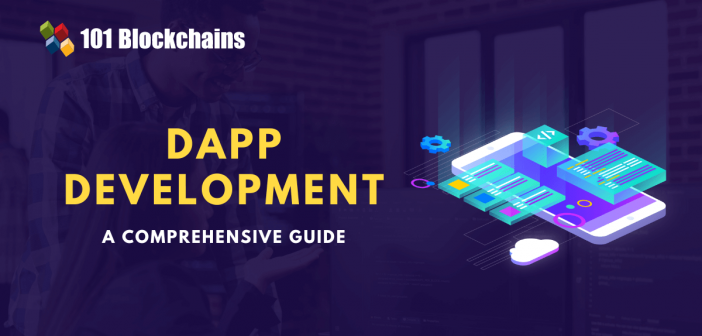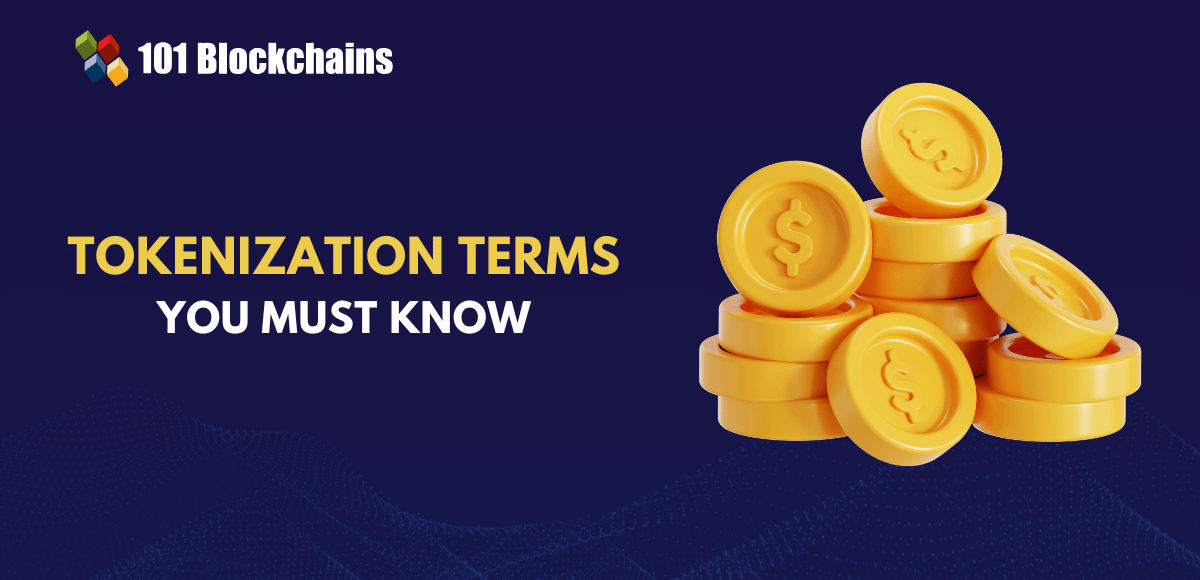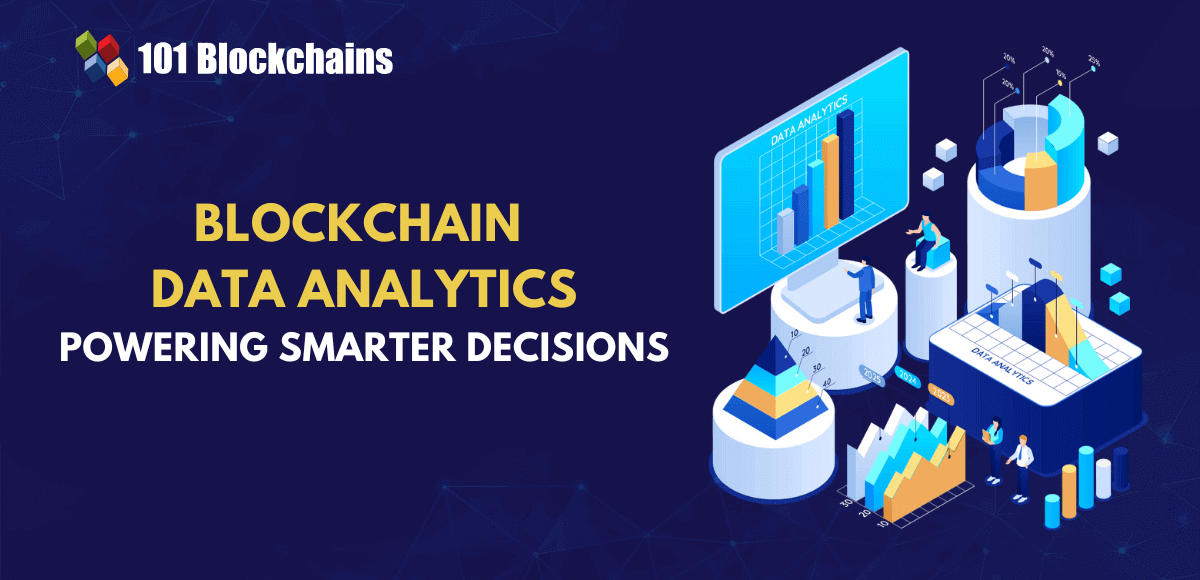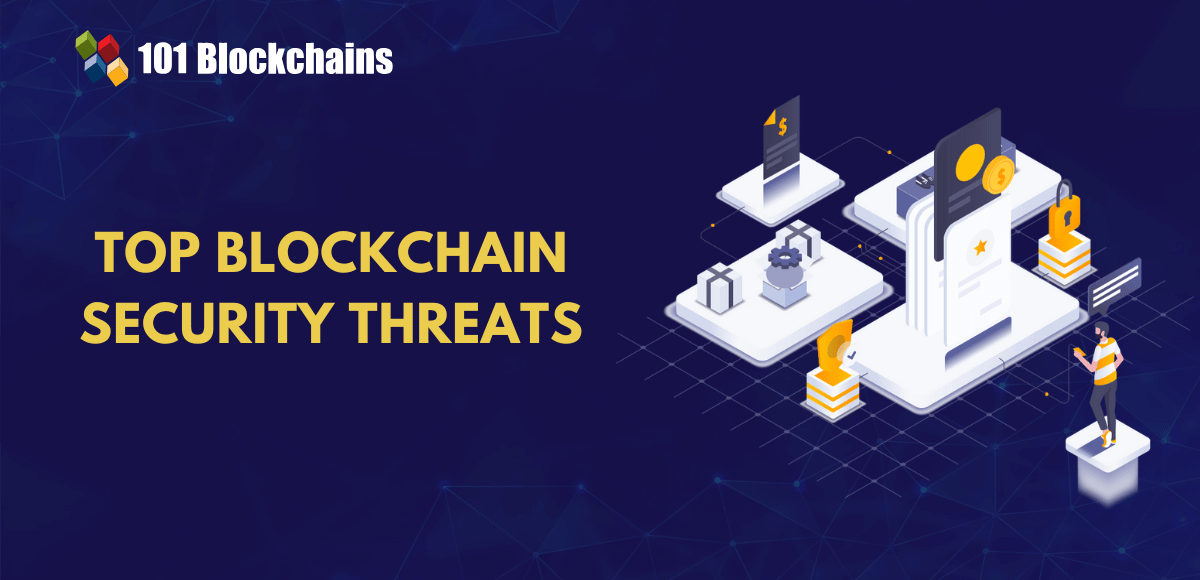Learn how blockchain truly works, master key definitions, and uncover what makes smart contracts so "smart." Dive into the fundamentals, gain valuable insights, and start your blockchain journey today!

- Blockchain
James Howell
- on April 07, 2023
A Comprehensive Guide to DApp Development
Decentralized applications, or dApps, are the core attractions in the crypto and blockchain ecosystem right now. The decentralized applications do not depend on centralized servers or backend technologies. On the contrary, dApps leverage Web3 technologies for addressing logic execution and other backend functions. The interest in dApp development tutorials and guides has been spiking significantly with immutability and tamper-proof security. Most of the guides on dApp development focus on the fundamental prerequisites and top-level overview of important steps for developing dApps.
The following post offers you a technical guide for building basic end-to-end decentralized applications for retrieving and storing existing ETH prices with the help of smart contracts.
Why Should You Learn about Decentralized Application Development?
You could find reliable answers to “What is a dApp development?” by reflecting on the definition of dApp. Decentralized apps have their backend code on decentralized blockchain networks rather than centralized servers. On the other hand, the frontend logic and user interfaces for dApps could use any language. In addition, the frontend code and user interface can be implemented on desired servers for interaction with backend logic. Decentralized apps store the backend programming logic in smart contracts, which are immune to tampering and offer high security.
You should learn how to develop dApps, considering the broad range of benefits facilitated by decentralized applications. The benefits of dApps include better privacy, lower downtime and censorship resistance. Most important of all, dApps can provide a trustless environment for logic execution.
On the other hand, effective blockchain dApp development practices are essential for avoiding the pitfalls of dApps. For example, you have to encounter the overheads of running logic throughout a distributed ledger in comparison to centralized servers. In addition, user experience elements with decentralized applications are completely different from traditional applications.
Want to understand the best ways to use DeFi development tools like Solidity, React, and Hardhat? Enroll now in DeFi Development Course!
What Are the Important Components in dApp Development?
The mandatory highlight in all guides on dApp development explained with a technical perspective must focus on the important parts of the architecture of a decentralized application. You would need the following essential components for building a decentralized application.
-
Smart Contract
Developers must note the importance of smart contracts in adding distinct functionalities in dApps. As a matter of fact, the smart contract serves as crucial highlights in answers to “How do I create a dApp?” with the benefit of programming blockchain-based applications. The smart contracts feature the business logic of the decentralized application and the state of the application.
-
Frontend Logic and User Interface
The backend development for decentralized apps relies on scripting smart contract logic, which you have to deploy on blockchain network. However, developers can create the frontend logic by using traditional Web2 technologies such as JavaScript and HTML. As a result, developers could rely on familiar tools, frameworks and libraries for dApp development.
The user interface, or UO, also serves as an important highlight in dApp. Developers have to link the UI with smart contracts through client-side libraries. The client-side library examples, Web3.js and Ethers.js, can be bundled along with desired frontend resources before sending them to concerned browser alongside the UI.
-
Data Storage
The selection of a dApp development platform also depends on the data storage implications of decentralized applications. Decentralized on-chain data storage can be expensive, thereby demanding the need for storing data with off-chain systems. For example, IPFS can help in storing blockchain data while ensuring that the blockchain stores important business logic alongside ledger state. Conventional cloud-based storage systems are also a favorable recommendation for data storage with dApps. Furthermore, different developers rely on decentralized options for maintaining and extending trustless environment properties of dApps.
Important Dependencies for Developing Decentralized Applications
The next crucial element in a dApp development tutorial would focus on the dependencies required for creating dApps. Here is an outline of the common dependencies you need for dApp development.
-
Node Package Manager
The Node Package Manager or NPM is available with JavaScript in the Node.js library. You must verify whether you have the NPM installed before starting the development process.
-
Truffle Framework
The second important requirement is a dApp development platform, such as Hardhat or Truffle. For example, Truffle framework can help in developing Ethereum-based decentralized applications. Developers can access a collection of tools that help developers in creating smart contracts with Solidity. The Truffle framework also helps developers in testing and deploying smart contracts on blockchain networks. It also offers an ideal platform for developing the client-side application for dApp.
-
Ganache
Ganache is another preferred highlight in technical guides on dApp development. It is a local in-memory blockchain, which you can download from the website of Truffle framework. Ganache is an important requirement for deploying dApps.
-
Metamask
The Metamask wallet extension is the next crucial dependency for dApp development. Metamask wallet helps in connecting to the Ethereum blockchain. The Metamask wallet is available as a Google Chrome web extension.
-
Syntax Highlighting
You would use Solidity programming for blockchain dApp development, and syntax highlighting is a recommended best practice for the same. The majority of IDEs and text editors do not feature syntax highlighting functionalities. You would have to choose a package for supporting the syntax highlighting dependency in Solidity.
Are you aspiring to learn the fundamentals of the Ethereum Virtual Machine and smart contracts’ upgradability? Enroll now in the Advanced Solidity Development Course.
Steps for Creating a Decentralized Application
The distinct highlights of dApp development explained for beginners would also emphasize the step-by-step approach to creating dApps. The following steps could help you develop a dApp for retrieving and storing ETH prices in a smart contract.
-
Smart Contract Development
The first step in the dApp development process is smart contract development. A simple, smart contract example would help in looking for data and updating the contract state updates on blockchain network. In this example, you can use the ETH/USD data feed to obtain price information. The project will also help you store the results of the feed permanently on the concerned smart contract. You can use the Chainlink Data Feeds, as it is a trusted decentralized Oracle network.
You can find answers to “How do I create a dApp?” by using an IDE and development platform. The recommended choice of IDE, in this case, would point to Visual Studio Code. On the other hand, you can choose Hardhat as the development platform because it is a popular Ethereum Virtual Machine or EVM development framework. Here is the recommended sequence of actions you can use for creating the smart contract for the dApp.
Create a new directory for the dApp, featuring the backend folder to store the code for smart contract logic.
Open the newly created directory in the Visual Studio Code editor, followed by installation of Hardhat.
After installing Hardhat, you must take away the file with the name “Touch.sol” from the folder titled “contracts.” Developers have to create and save the new file, “PriceConsumerV3.sol,” in the “contracts” folder.
Take a sample dApp smart contract logic from official Chainlink documentation and copy it into the “PriceConsumerV3.sol” file. You can notice a demo contract with a “getLatestPrice” function for looking up the current prices on a data feed for ETH/USD prices.
The next step in how to develop dApps would involve the creation of a new variable along with a function. The function will help in storing the value in the logic of the smart contract. You have to set up a new variable within the “priceFeed” variable for storing the ETH price value.
The final step in smart contract development for your dApp focuses on creating another new function. The dApp front can call the new function and could look for the latest ETH price by invoking the “getLatestPrice” function. At the same time, the function must also store the result value in a revised “storedPrice” section.
Start learning Smart Contracts and its development tools with World’s first Smart Contracts Skill Path with quality resources tailored by industry experts Now!
-
Smart Contract Deployment
The answers to “What is a dApp development?” also emphasize the need for following best practices in deploying smart contracts. After creating the smart contract, you can start compiling and deploying it on desired test networks, like the Ethereum Rinkeby test network. Developers must ensure that their Metamask wallet has the required Rinkeby ETH balance.
You can rely on Remix IDE for compiling and deploying smart contracts by leveraging the general Remix processes. On the other hand, IDEs such as VS Code recommend the use of Hardhat for contract management. Here are the important steps for deploying your smart contract with Hardhat.
The process for compilation and deployment of smart contracts with a dApp development platform like Hardhat requires installation of a library of Hardhat tools. In addition, developers must also install the dotenv library, which offers storage of private keys and passwords. You would also need the Chainlink contracts library to use the data feed for your dApp effectively.
In the next step, developers have to configure the “hardhat-config.js” file by adding relevant code for compiling and deploying the smart contract.
Now, you have to configure the “.env” file within the backend folder and extract private key from the crypto wallet. Paste the private key in the value tab for the “PRIVATE_KEY” tab within the “.env” file. It is important to use a new wallet that does not store funds on the main blockchain network.
After completing the previous step in blockchain dApp development, developers should work on obtaining the RPC endpoint. The RPC endpoint is critical for accessing the Rinkeby test network. Interestingly, you can access the RPC endpoint by entering RPC URL for the “RINKEBY_RPC_URL” section within the “.env” file. Node providers such as Infura could help you obtain the RPC URL.
The next stage in answering “How do I create a dApp?” for deploying smart contracts is the modification of “deploy.js” file. You can find the file within the “scripts” folder, and modification of its contents can help in deploying the new contract. Developers have to access the file and replace the existing code with your smart contract logic. The code would take the compiled “PriceConsumerV3” contract for identification of effective deployment strategies.
Once you have saved the changes, you can compile and deploy the smart contract by using Hardhat. You can find a message showcasing the exact address on Rinkeby test network where the smart contract has been deployed. The address is an important requirement for the subsequent steps in developing your ETH price tracking dApp.
Learn the fundamentals, working, core principles and use cases of Solidity & Smart Contracts from the E-book: SOLIDITY & SMART CONTRACTS: A COMPREHENSIVE GUIDE
-
Develop the Frontend of the Decentralized Application
The list of steps in how to develop dApps would focus on creating the frontend programming logic and user interface. You could rely on different frameworks for building the frontend code alongside the user interface for your dApp. One of the renowned JavaScript libraries, React, could help you create web-based user interfaces with multiple features. Many web3 apps utilize React for developing the frontend logic.
Furthermore, you would also need other libraries, such as Ethers.js, for interaction with smart contracts and EVM-compatible blockchains. The development of frontend for your basic dApp would need a React application and off-chain logic based on Ethers.js for connecting user interface to smart contract. Here are the important steps in developing the front-end logic and user interface for your end-to-end decentralized application.
The important highlight in a dApp development tutorial for developing the frontend application is the React application. You can ensure installation and implementation of ‘create-react-app’ boilerplate project and modify it according to your dApp requirements. The React application development begins with installation of the library in the newly created ‘frontend’ folder. After creating the ‘frontend’ folder, you can find the new folder featuring the existing react code. You have to carry out certain actions by expanding the ‘frontend’ folder.
In this step, developers are ready to move ahead with modification of the React application logic. However, you must install the Ethers.js and Bootstrap libraries on the dApp development platform before moving to the next step. Bootstrap serves as a renowned frontend CSS library featuring React-compatible UI widgets and the power of CSS styling. Ethers.js is useful for connecting smart contracts to the frontend. You can change the React application logic by accessing the file titled “App.js” and removing the contents for building from scratch.
Developers have to inform the dApp that it will use React as well as Ethers.js. Subsequently, you have to create the “App” function and implement export procedure, after which you can begin content inputs for the function. Developers need to add the code with desired functionalities, such as setting up “setStoresPrice” and “storedPrice” react hooks. In addition, the code must facilitate connection to the desired web3 wallet. The code should also set the relevant and precise, smart contract address alongside its ABI.
The next step in configuring the React application code involves creation of two functions for the dApp. You have to create the “getStoredPrice” and “setNewPrice” functions alongside a call for invoking “getStoredPrice” within the App function.
In the final stage, the application must have the features for returning JSX code on the browser for rendering. You can paste the code for desired functionalities at the lower section of the App functions within the “getStoredPrice()” call. The pasted code must return a basic grid layout with two columns. First column of the grid layout features existing ETH/USD pricing stored in the concerned smart contract. On the other hand, second column features a button for enabling interactions with smart contracts and updates of the price stored in them.
Want to learn the basic and advanced concepts of Ethereum? Enroll in our Ethereum Development Fundamentals Course right away!
Bottom Line
The technical guide on blockchain dApp development offered an example of creating dApps for basic use cases. You can rely on the guide for understanding the basic components of dApps alongside the importance of dApp development. In addition, aspiring dApp developers could also obtain a detailed overview of the crucial dependencies for creating and deploying dApps.
The continuously growing prominence of dApps in the web3 landscape calls for valuable career prospects in dApp development. Candidates with fluency in best practices for dApp development and selection of right tools, frameworks and libraries can strengthen their competitive advantage in the web3 talent landscape. Learn more about dApp development in detail with professional training courses now.
*Disclaimer: The article should not be taken as, and is not intended to provide any investment advice. Claims made in this article do not constitute investment advice and should not be taken as such. 101 Blockchains shall not be responsible for any loss sustained by any person who relies on this article. Do your own research!







